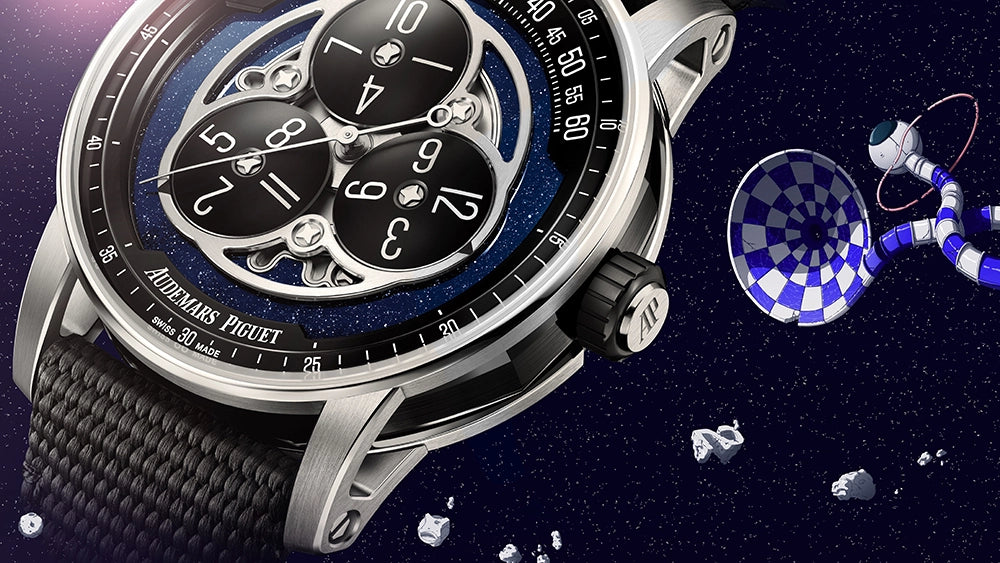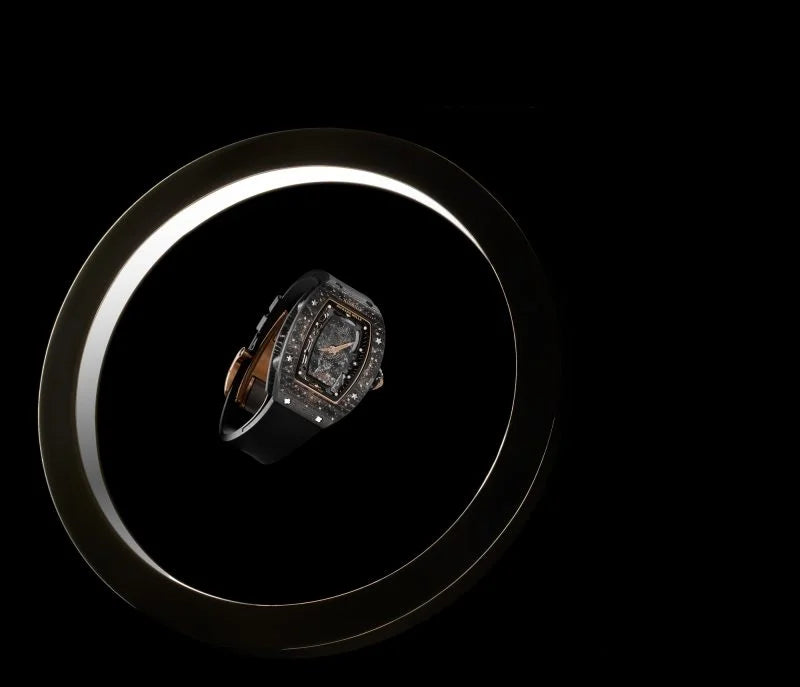
New Audemars Piguet Code 11.59 Starwheel
Audemars Piguet has released yet another stunning watch. The Swiss luxury watch brand has added to the list of an already incredible list of releases this year. The Code 11.59 has its new model, and Audemars Piguet has revived a fan-favourite wandering hour complication from the 90s.
Audemars Piguet launched Code 11.59 in 2019 as a collection that would represent the future of Audemars Piguet. Although the initial release of time-only Code 11.59 was a relatively bland way to start a collection representing the future of AP, three years and 30 watches later, we have concluded that each Code 11.59 model needs to be evaluated on its own terms.

With all that said, this latest release might be the most interesting Code 11.59 timepiece released by Audemars Piguet yet. It features a complication that was originally designed in the 17th century by a couple of Roman clockmakers for a pope.
Sébastian Vivas, the heritage and museum director at Audemars Piguet, says,
"Invented in 1655 thanks to a request by Pope Alexander VII, who suffered from insomnia that was exacerbated by the ticking of his clock, the wandering hours complication was rediscovered by Audemars Piguet in 1991 and combines history, technical challenges, design and poetry."
Now, let us discuss this watch in detail.
Wandering Hours
A TRIBUTE TO THE PAST

The latest Audemars Piguet Code 11.59 Starwheel features the wandering hours complication, which was invented in the 17th century. The way this complication works is pretty amazing. Wandering hours uses a system of satellites that gravitate along a minute scale, arranged in the form of an arc, to display hours. The way the hours and minutes are aesthetically presented brings an air of mystery to the reading of time.
The Dial

For this Audemars Piguet Code 11.59 launch, French artist Ugo Gattoni has developed an original universe - a poetic and playful world.
A central rotor, operating a complete revolution in 3 hours, on which there are three fixed aluminium discs that turn on their own axes, has helped Audemars Piguet to achieve the time display. Each aluminium disc has four digits from 1-12 that take turns to point at the arched sector at the top of the dial where the minute scale is printed. The 18k white gold trotteuse (second hand) is slightly curved at the tip to follow the relief of the aluminium discs. This trotteuse indicates seconds like in a traditional timepiece. Blue aventurine serves as the background for the three aluminium rotating discs looking like planets in this tiny universe of the dial.
The Glass

Audemars Piguet has created a modern double-curved sapphire crystal. The curved profile of the crystal makes for a unique viewing experience. While internally, it is shaped like a dome, it is curved vertically from 6 o'clock to 12 o'clock.
The Case

This Audemars Piguet watch has a 41 mm black ceramic case middle and crown with an 18k white gold bezel, lugs, and caseback. It features double glareproofed sapphire crystal and glareproofed sapphire crystal caseback.
The Movement

To power up this stunning watch, Audemars Piguet has used the Calibre 4310, which is a selfwinding movement with a power reserve of around 70 hours.
The Bracelet
Completing the watch's aesthetics is a textured black rubber-coated strap with an 18k white gold pin buckle.
Conclusion:
Audemars Piguet has revived a complication whose functioning is amazing. It is good to see that Audemars Piguet is trying something new with the Code 11.59. Can the Code 11.59 really be the future of Audemars Piguet? We'll see.


